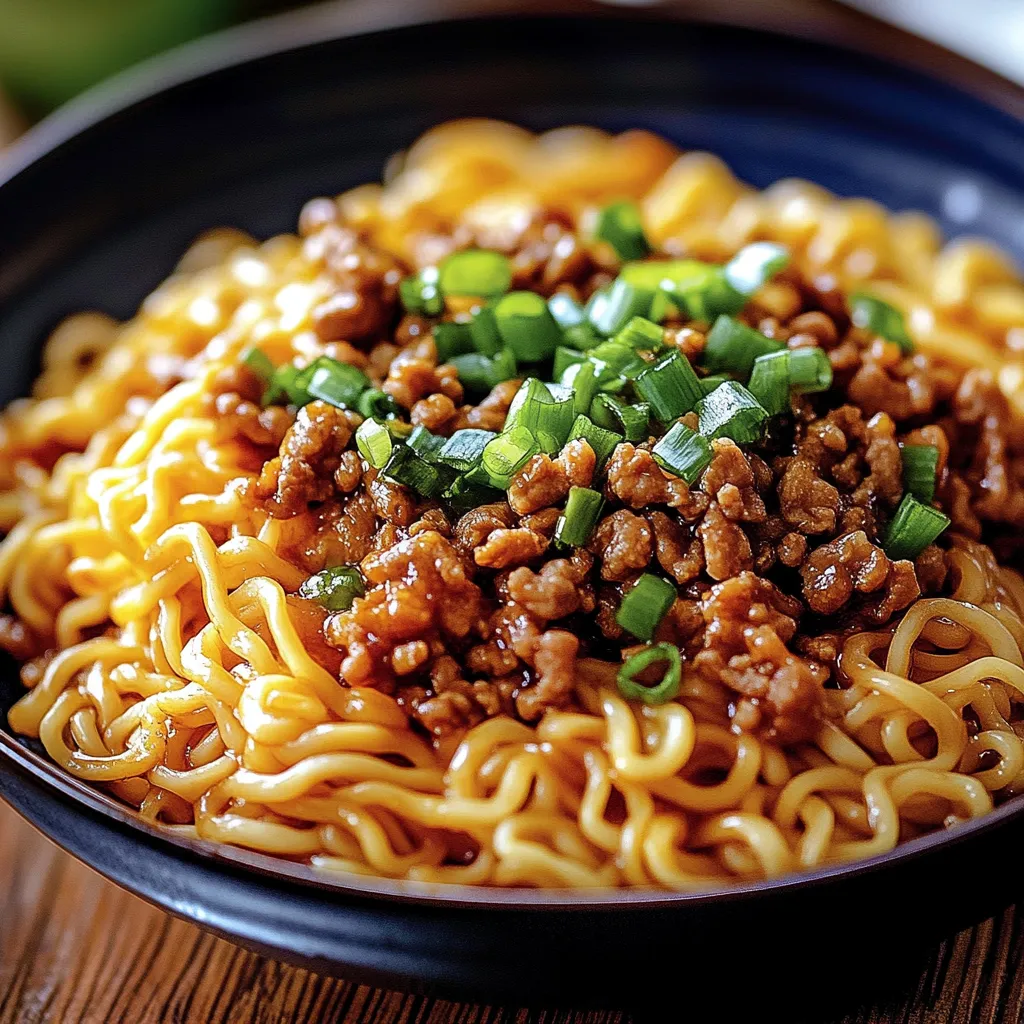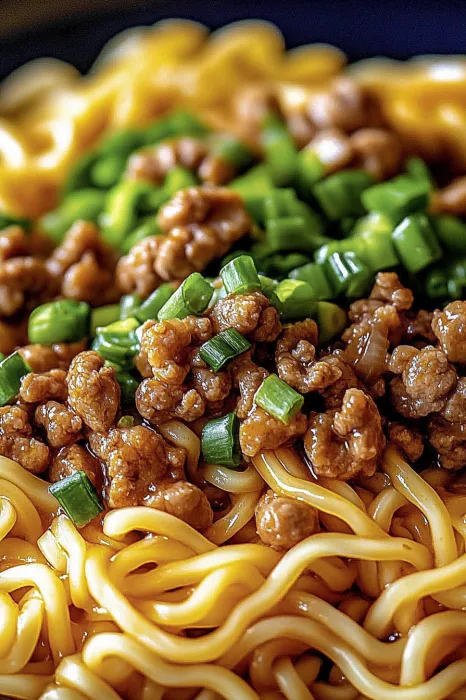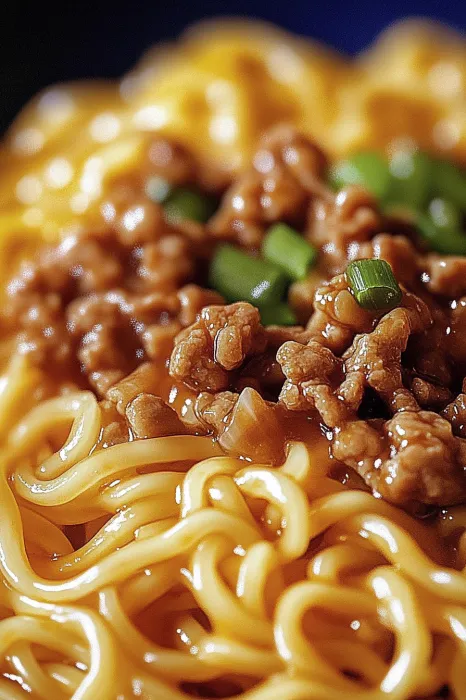 Pin it
Pin it
This robust Sichuan noodle bowl brings real Chinese tastes to your home with its spot-on mix of spice, depth, and varied textures. When chili oil meets Sichuan peppercorns and tasty meat, you get a memorable food moment that'll make you feel like you're walking through Chengdu.
I whipped this up for the first time after coming back from Sichuan province in China, trying hard to copy the amazing street food I'd eaten. After playing around with it a few times, this version turned into my favorite comfort meal that even my friends who can't handle spicy stuff ask for again and again.
Ingredients
- Chinese wheat noodles (fresh or dried): They give that awesome chewy bite and soak up all the sauce. You can use regular spaghetti if that's all you've got.
- Bok choy: Adds nice crunch and balances out the rich flavors. Look for ones with solid stems and bright green leaves.
- Chili oil: Brings the heat this dish needs. Try to find one with actual chili bits floating in it for better taste and look.
- Sesame paste: Makes the sauce nice and smooth. If you can't find Chinese sesame paste, just grab some tahini instead.
- Sichuan peppercorns: Creates that weird but cool tingly feeling in your mouth. When possible, buy them whole and crush them yourself for stronger smell and taste.
- Ground pork: Adds meaty, rich flavor. Get some with at least 15% fat to keep it juicy and flavorful.
- Chinese black vinegar: Gives that needed tang. The older stuff tastes more interesting if you can find it.
Step-by-Step Instructions
- Cook Your Noodles:
- Get a big pot of water boiling on high heat. Drop in your noodles and cook them until they're still a bit firm when you bite them—usually 4-6 minutes for fresh ones or 8-10 minutes for dried. Try one to check. When done, drain them and run cold water over them so they don't keep cooking or stick together.
- Mix Up Your Sauce:
- Put the sesame paste or tahini in a bowl first. Slowly add hot water while you stir, keeping at it until everything's smooth with no lumps. Don't dump all the water in at once or it'll get all clumpy. Then mix in your chili oil, soy sauce, black vinegar, sugar, and ground Sichuan peppercorns if you're using them. Take a taste and tweak it how you like, but remember it'll taste stronger once it hits those hot noodles.
- Cook The Meat:
- Get a wok or big pan really hot—until you see a little smoke. Pour in some vegetable oil and swirl it around. Throw in your ground pork or chicken, breaking it into tiny bits with your spoon. Let it sit for a minute to get some brown on it, then stir it up and cook until there's no pink left, about 4-5 minutes. Add your chopped garlic and ginger, keep stirring for half a minute until you can smell them but they're not burnt. Pour in soy sauce and hoisin, mixing until all the meat is coated and looks shiny.
- Quick-Cook The Veggies:
- Boil some water in a small pot. Toss in your bok choy or spinach for just 30 seconds until they turn bright green and wilt a bit. Right away, put them in ice water to stop the cooking and keep that nice color. After they cool down, squeeze out the extra water and chop any big pieces smaller so they're easier to eat.
- Put It All Together:
- Split the sauce between your serving bowls, spreading it across the bottom. Put the cooked noodles on top and mix them around so every noodle gets covered with sauce. Add your cooked veggies and meat on top. Finish with lots of chopped green onions and crushed peanuts or sesame seeds if you want. Eat it right away while it's hot.
 Pin it
Pin it
I really love the Sichuan peppercorns in this dish more than anything else. The first time I felt that strange numbing thing along with the spicy heat, it totally changed what I thought spicy food could do. A Chinese friend's grandma showed me that if you toast them right and grind them up yourself, they release this amazing citrusy smell that really makes this dish stand out.
Managing The Spice
What makes Sichuan food so special is how it handles spice. Instead of just burning your mouth like other spicy foods, Sichuan dishes play with the tingly numbness from Sichuan peppercorns and the fire from chili oil. If you're new to this, start with just 1 tablespoon of chili oil and a tiny bit of Sichuan peppercorns. You can always add more next time as you get used to it. The cool thing is that the numbness actually makes the spicy parts more enjoyable by dulling some of the burn. For the real deal, try to hit that sweet spot where your lips feel pleasantly tingly but you can still taste everything else in the dish.
Make Ahead Tips
This noodle dish comes together fast but has several parts you can fix ahead of time to make it even quicker. You can mix the sauce and keep it in the fridge for up to 3 days. The meat can be cooked and stored for a couple days, though it's way better fresh. You can quick-boil the veggies a day before and keep them in the fridge. Even the noodles can be cooked ahead, tossed with a bit of oil so they don't stick, and kept overnight in the fridge. When you're ready to eat, just warm up the meat, dip the noodles in hot water for a minute, and throw it all together for a restaurant-quality meal in no time.
Regional Variations
This recipe is just one way to make Sichuan noodles, closest to what's called Dan Dan noodles. Around Sichuan province, you'll find tons of different versions. Some have a thinner, more soup-like sauce instead of the thick sesame one we're using here. Others add preserved veggies called yacai that bring a funky fermented taste. In Chongqing, they make a similar dish way spicier with extra chili oil and top it with slow-cooked beef instead of ground pork. The best part about Sichuan cooking is how flexible it is. Once you get good at making this version, try playing with different regional styles to find the one you like best.
 Pin it
Pin it
Frequently Asked Questions
- → How can I control the spice level?
Simply adjust the quantity of chili oil you use to make it as mild or as fiery as you like.
- → What can I swap for meat if I'm vegetarian?
Crumbled tofu or finely minced mushrooms are flavorful and meat-free options you can use.
- → What replaces Sichuan peppercorns if I don't have them?
Sichuan peppercorns offer a unique numb spiciness, but a small amount of black pepper can work instead.
- → What kind of noodles do you recommend?
Chinese wheat noodles are your best bet, but spaghetti works as a substitute in a pinch.
- → Can I make parts of it in advance?
The sauce and meat mix is prep-friendly, but cook the noodles just before serving so they stay perfect.
